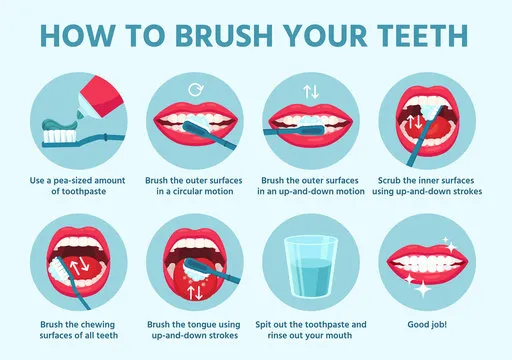
The importance of correct teeth brushing behavior cannot be overstated as it directly impacts oral health and overall well-being. Proper brushing helps to remove plaque, bacteria, and food particles from the teeth and gums, preventing issues such as cavities, gum disease, and bad breath. It also helps to maintain the whiteness of teeth and prevents stains. Additionally, regular brushing stimulates the gums, promoting good circulation and preventing gum disease. Overall, correct teeth brushing behavior is essential for maintaining optimal oral hygiene and preventing various dental problems.
Select a soft-bristled toothbrush or an electric toothbrush that fits comfortably in your hand and a fluoride toothpaste recommended by your dentist.
Squeeze a pea-sized amount of toothpaste onto the bristles of your toothbrush. Fluoride toothpaste helps prevent cavities and strengthens enamel.
Hold the toothbrush at a 45-degree angle to your gums. This angle allows for effective cleaning along the gumline and tooth surfaces.
Using gentle circular motions, brush the outer surfaces of your teeth, paying special attention to the back molars and along the gumline. Next, brush the inner surfaces of your teeth using the same circular motion.
Use a back-and-forth motion to clean the chewing surfaces of your molars, where food particles often accumulate.
Gently brush your tongue to remove bacteria and freshen your breath.
After brushing for at least two minutes, rinse your mouth thoroughly with water to remove any remaining toothpaste and debris.
For optimal oral hygiene, remember to floss between your teeth at least once a day to remove plaque and food particles that brushing alone may miss.
Swish with an antimicrobial mouthwash to kill bacteria and freshen your breath. Choose a mouthwash that is alcohol-free for gentler use.
Replace your toothbrush every three to four months, or sooner if the bristles become frayed or worn out.
By following these steps and maintaining a consistent oral hygiene routine, you can effectively remove plaque, prevent cavities, and promote overall dental health.